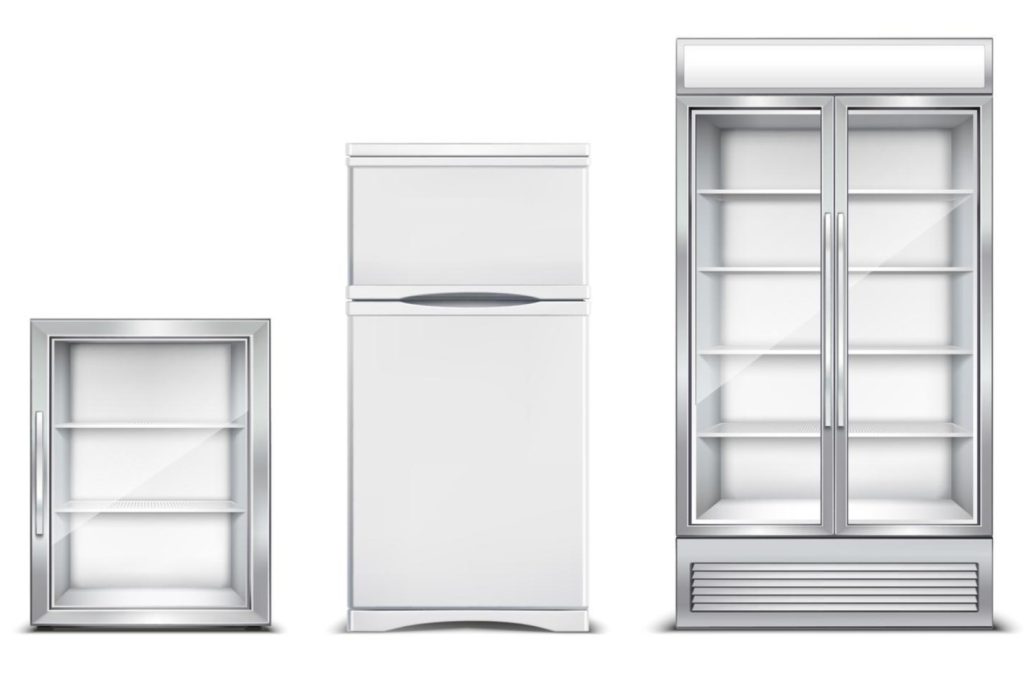When managing a food business, it is essential to prioritize food safety. One crucial aspect of maintaining food safety is ensuring clean and sanitary commercial refrigerators in the kitchen. In this comprehensive guide, we will explore the best practices for cleaning commercial refrigerators. These practices, therefore, will help you maintain hygiene standards and ensure the health and safety of your customers.
Cleaning Checklist for refrigerators:
- Schedule Regular Cleaning
- Gather Cleaning Supplies
- Empty and Defrost the Refrigerator
- Clean Interior Surfaces
- Sanitize
- Clean Exterior and Door Seals
- Monitor Temperature

1. Schedule Regular Cleaning
Establishing a regular cleaning schedule is essential for keeping commercial refrigerators in top condition. Aim to clean the refrigerator at least once a week, or more frequently if needed, depending on the volume of food stored and the environment. Regular cleaning prevents the buildup of food residues, spills, and bacteria, ensuring the refrigerator remains hygienic.
2. Gather Cleaning Supplies
Before starting the cleaning process, gather all the necessary cleaning supplies. This may include a mild detergent or commercial refrigerator cleaner, warm water, microfiber cloths, scrub brushes, and sanitizing solution. Consequently, having the right tools at hand will make the cleaning process more efficient and effective.
3. Empty and Defrost the Refrigerator
Begin by emptying the refrigerator of all food items. Store perishable items in another refrigerator or a cooler to prevent spoilage. Once the refrigerator is empty, turn it off and allow it to defrost if necessary. Defrosting helps remove ice buildup and allows for a thorough cleaning of all surfaces.
4. Clean Interior Surfaces
Using a mixture of mild detergent and warm water, first, wipe down all interior surfaces of the refrigerator. Next, pay close attention to shelves, drawers, and door seals, where spills and residues often accumulate. Then, use a scrub brush for stubborn stains, ensuring to reach into crevices and corners. Finally, rinse with clean water and dry thoroughly with a microfiber cloth.
5. Sanitize
After cleaning, sanitize the interior surfaces of the refrigerator to kill any remaining bacteria. Prepare a sanitizing solution following manufacturer instructions or use a commercial sanitizer. Apply the sanitizer to all surfaces and allow it to air dry. Sanitizing helps eliminate harmful pathogens and ensures food safety.
6. Clean Exterior and Door Seals
Don’t forget to clean the exterior of the refrigerator and door seals. Begin by using a damp cloth and mild detergent to wipe down the exterior surfaces, removing fingerprints, smudges, and spills. Additionally, pay attention to the door seals, as dirt and debris can accumulate, compromising the seal and leading to temperature fluctuations.
7. Monitor Temperature
Finally, after cleaning, ensure the refrigerator is operating at the correct temperature. Commercial refrigerators should maintain a temperature of 40°F (4°C) or below to prevent bacterial growth and food spoilage. Regularly monitor the temperature using a thermometer and adjust settings if necessary.

Following these steps will help you maintain food safety standards and keep your commercial refrigerators clean and sanitary. By prioritizing cleanliness and hygiene, therefore, you can create a safe environment for storing food and ensure the health and well-being of your customers.
